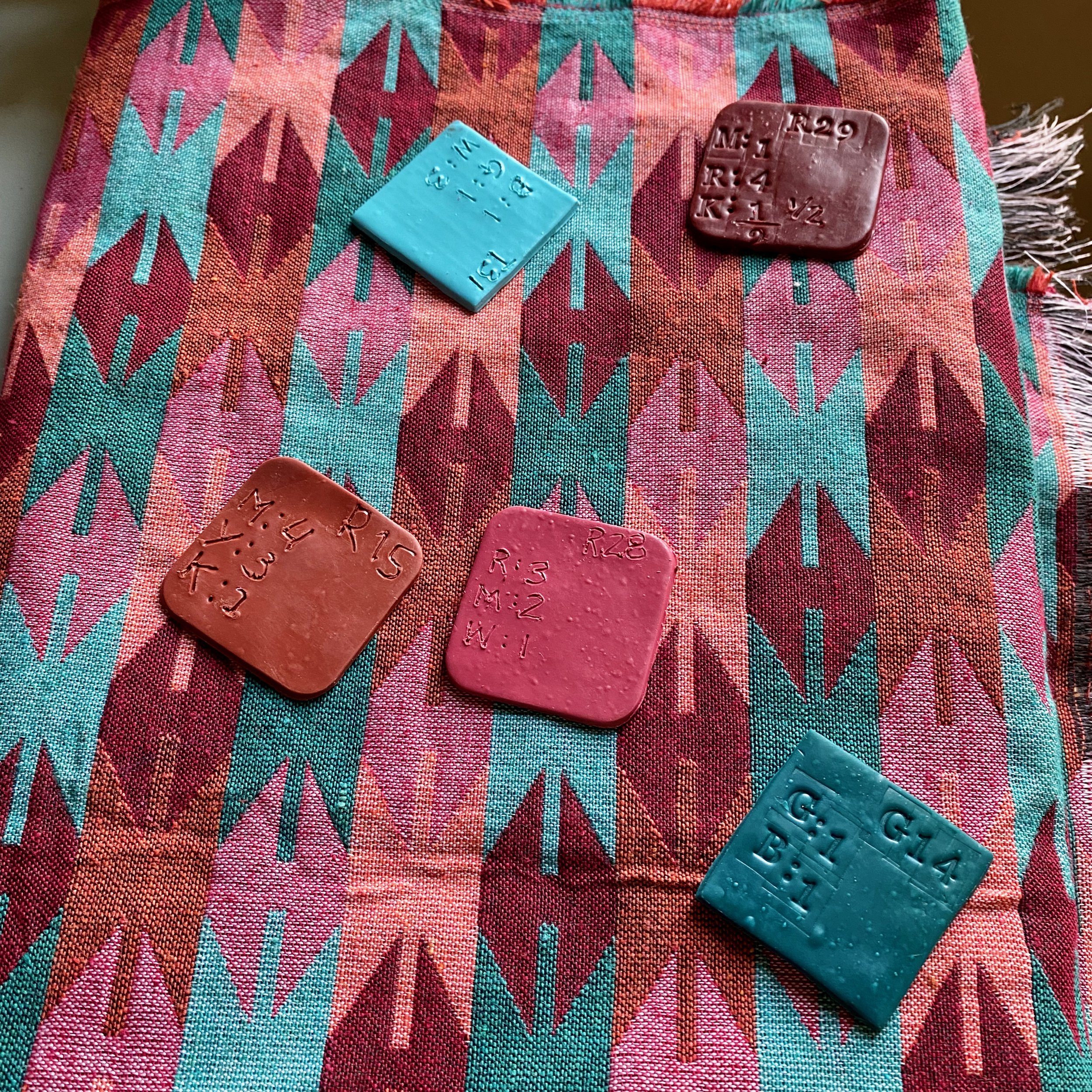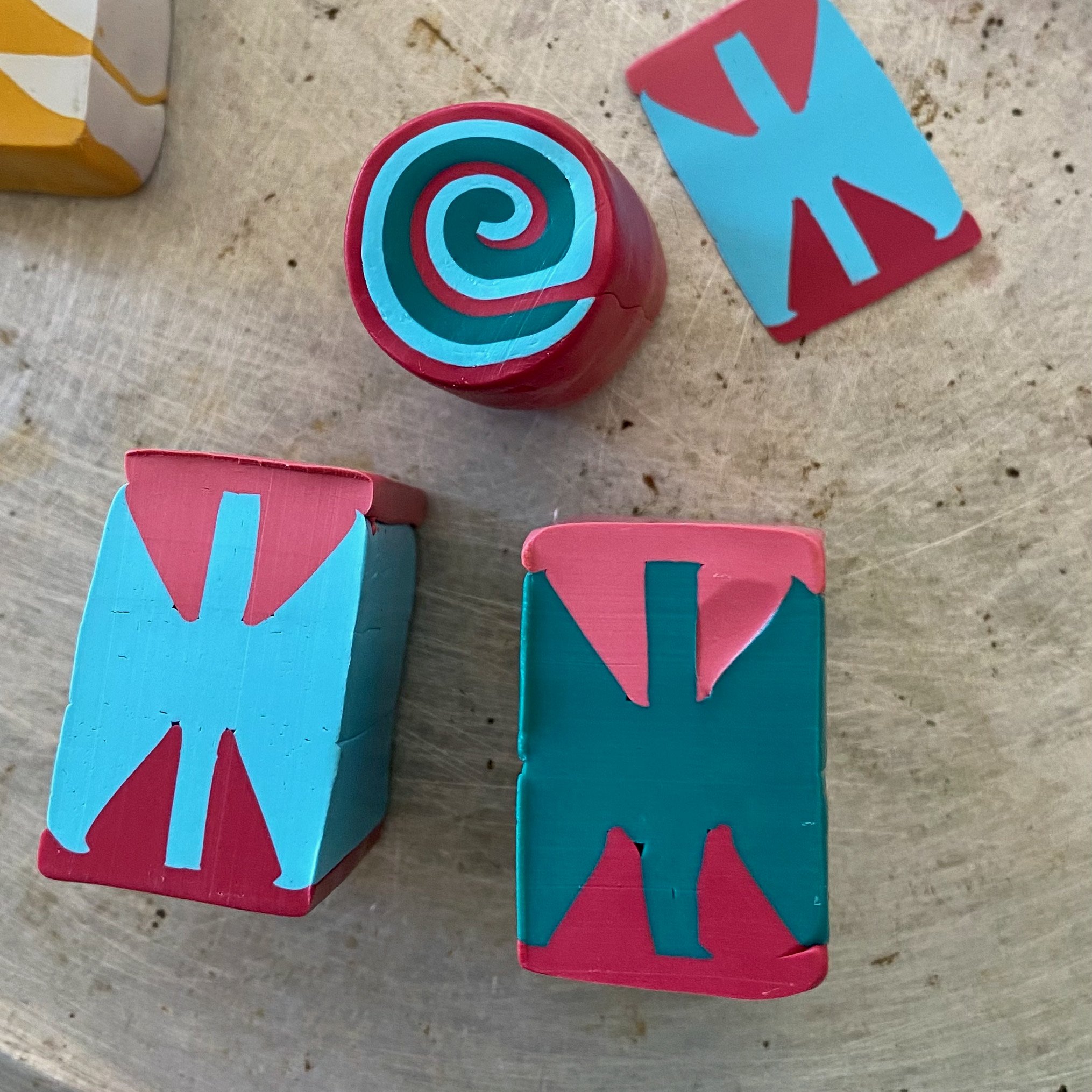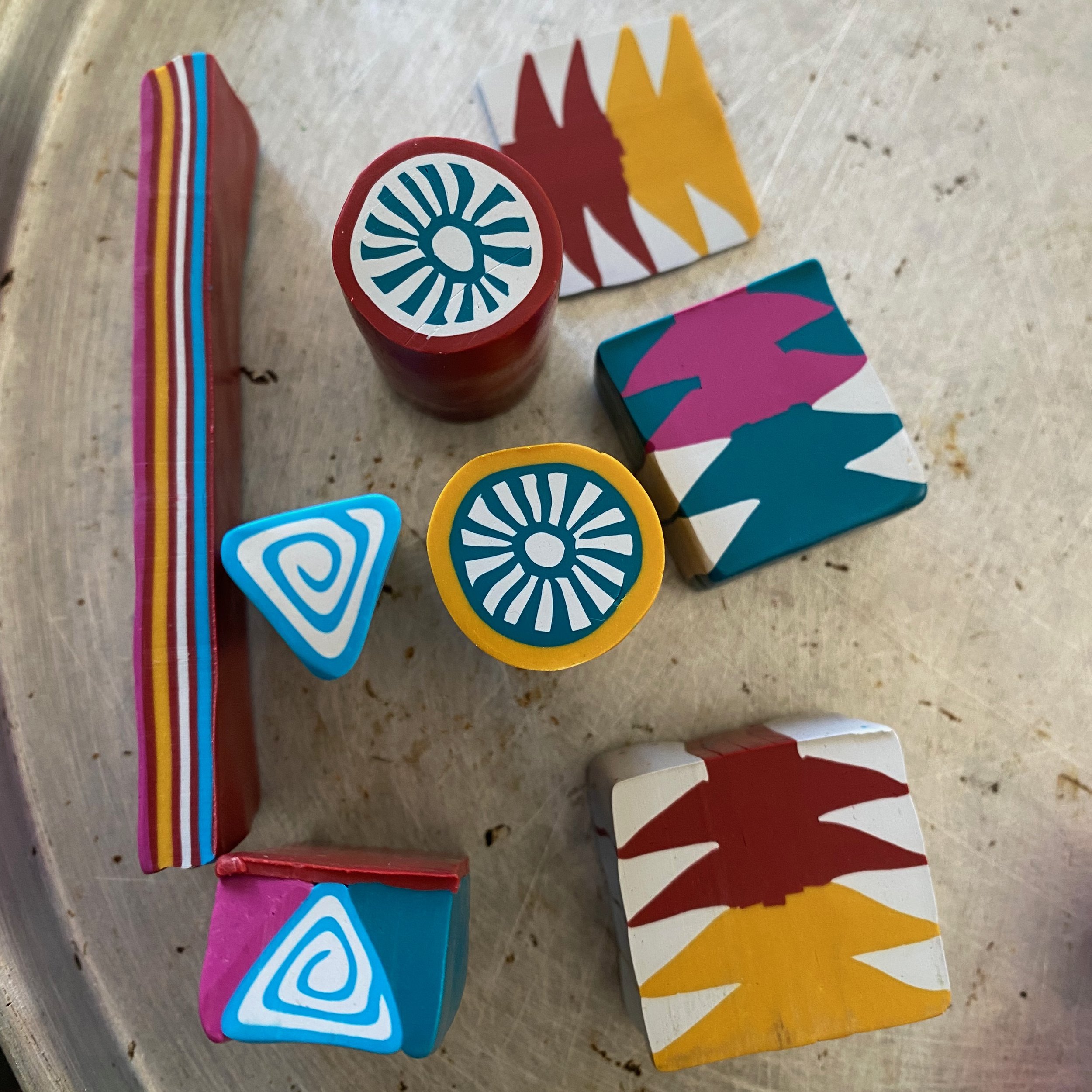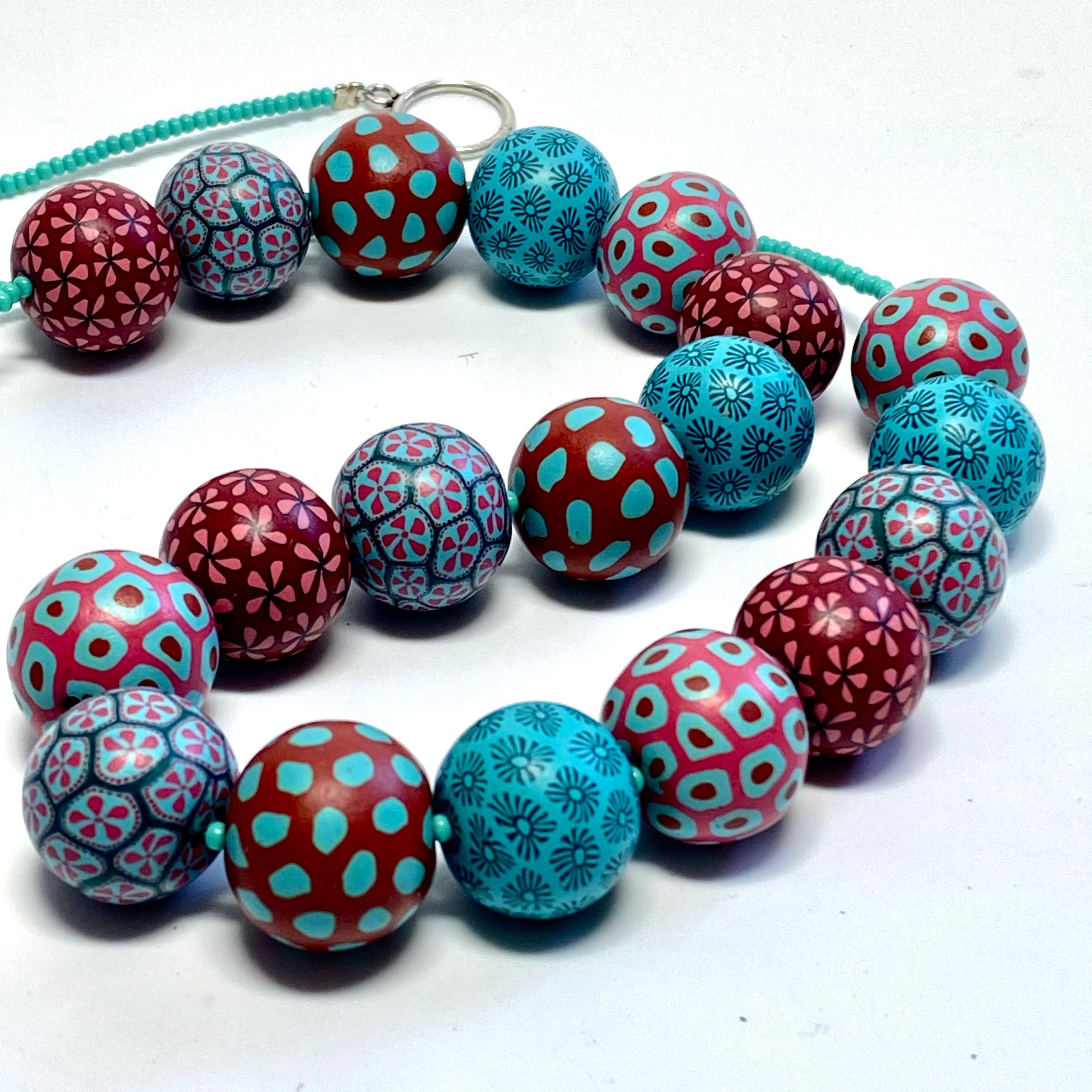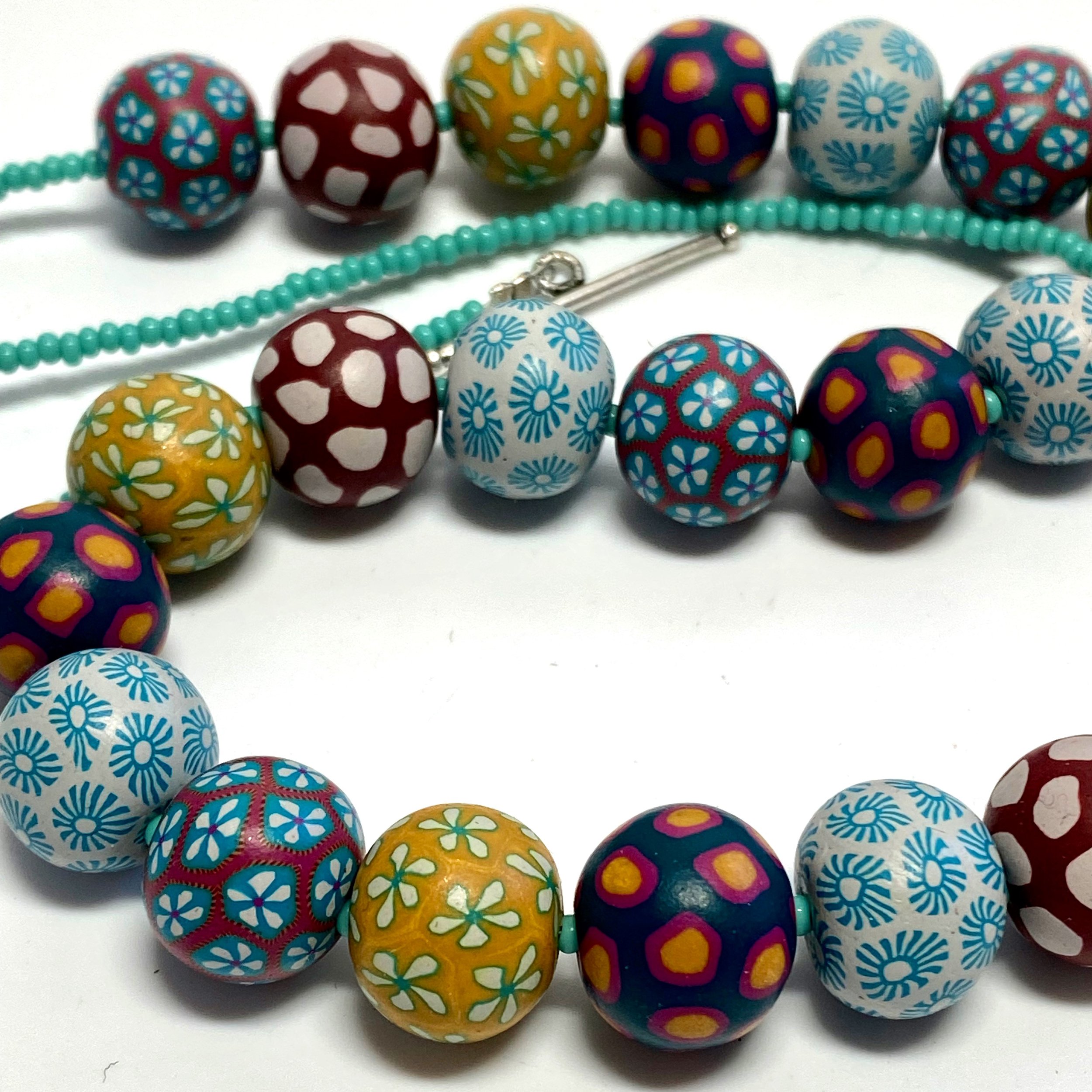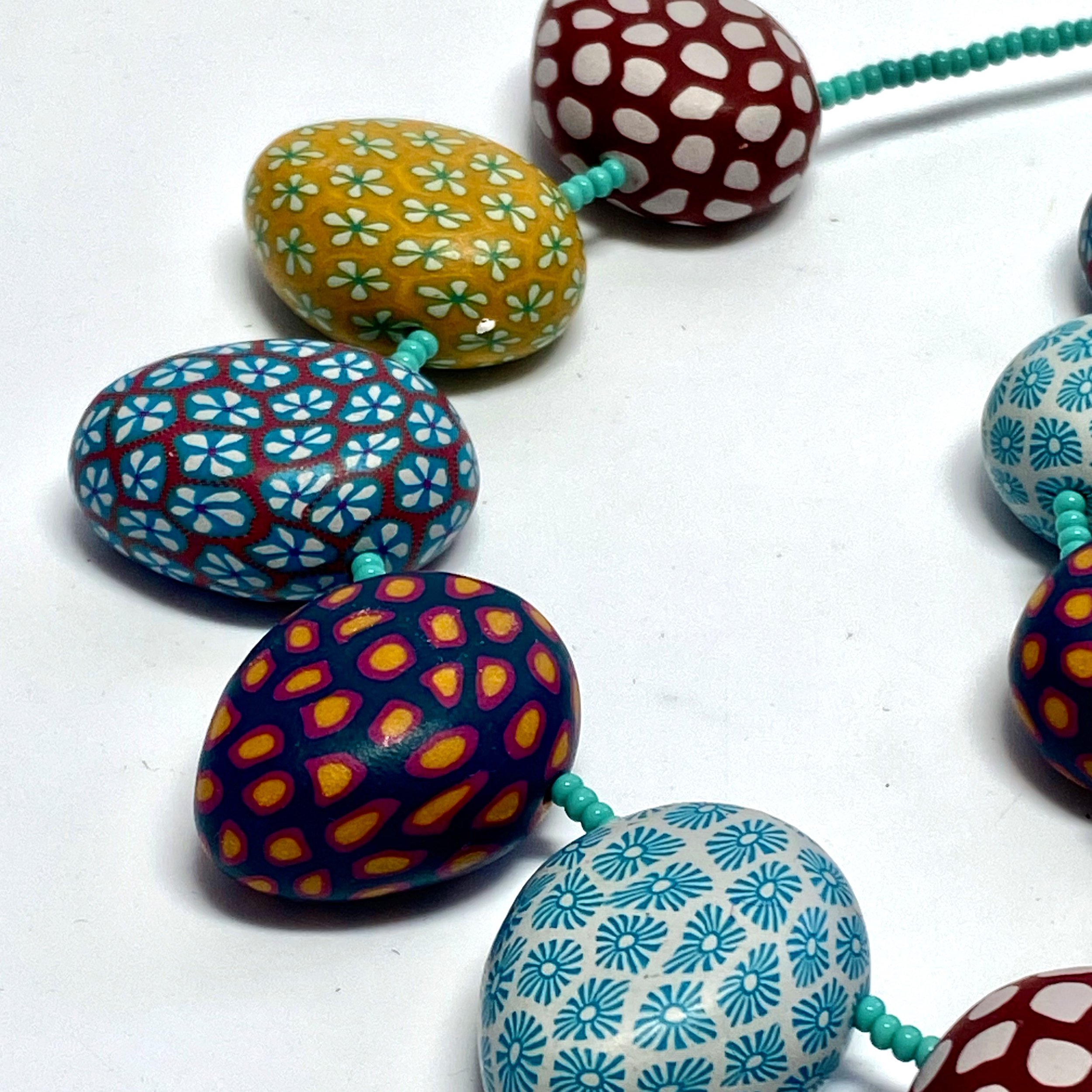Daring to design
Over fifteen years ago, some women of Samunnat Nepal began making polymer clay jewellery. Gradually, their expertise increased. Their designs drew on traditional Nepali elements but the designs were often the ideas of their teachers and based on feedback from buyers in Western countries.
Over the last few years, they have been encouraged to develop their own ideas and to make their own choices and design decisions. This doesn’t come naturally in Nepal. Artisans painstakingly repeat designs that have been around for decades or more. Imitation and copying are not considered bad things. Innovation and risk in design is not modelled and it was hard for the women to overcome their fear of making a mistake or failing. This fear has been drilled in many school classes across the country. Learning to take creative risks is a slow and ongoing process.
Our Zoom classroom
Recently, the women have moved ahead in leaps and bounds. For over a year the women have met regularly by Zoom with the US artist, Kathleen Dustin, and beautiful jewellery has emerged from this including the range that was sold at the Smithsonian Institution.
Meeting via Zoom was as unfamiliar to us as it was to everyone pre COVID. As Kopila said:
Everyone talked about “zoom meetings”. We wondered “how do we all fit in the small screen?” Sometimes it was hard for us to open the zoom link or the computer would not start. We’d have no sound or get confused about do we mute or unmute? There seemed so many things to remember but we were excited and proud to talk with our teachers.
Late last year, Christine Dumont, a European artist, joined us and there’s been an even greater focus on developing skills in independent design, confidence in experimentation, and a unique Samunnat voice. It’s been challenging but fun! We’ve mixed bespoke colours based on dhaka, Nepal’s traditional woven fabric. And we’ve used the dhaka designs to design our own in polymer. We’ve combined them to create jewellery!
Mixing and matching colours inspired by our Dhaka fabric
The polymer canes that we use to cover our beads
Some of our finished pieces!
Read the thoughts of some of the women below:
It was surprising to think about the design shapes in Dhaka, but it was also fun! (Anu)
Sharmila said, Clay itself is just something in a packet but when you use your imagination, it turns into something very special. I always feels like I am still new and now I am learning the Dhaka designs. They are so beautiful but very hard.
I remember when Kathleen and Christine Didi told us to make circle shapes. At first, I was confused and worried about how to make it perfectly round or what they wanted. But there was no pressure. I took my pen, started whatever or however and I made my unique shape. Then it was so special when Wendy Didi came to Nepal and we were playing with different colour recipes to match the traditional Nepali Dhaka colours. We are very excited, still want to keep making them wonderful. (Gita)
I love how our teachers don’t just share their skills but love us too. When Wendy didi is here teaching, she seems never bored. Even if we make mistakes, she always smiles and keep helping us. Still, these new Dhaka designs are not easy and we have to work hard. (Sita)
I love that the Dhaka designs are in traditional colours so I am excited making them. (Ambika)
I am very thankful to Kathleen, Christine and Wendy Didi. The Dhaka pattern designs are very different to what we have done before. Our Dhaka fabric has triangle shape which is like the Nepali flag too, so I felt that Dhaka fabrics Triangles shape is the symbol of Nepali style. (Pramila)
The Samunnat artists felt a link with women in Nepal who hand weave the lovely Dhaka fabric, creating the colours by combining cotton threads. The Samunnat women create the colours and designs by mixing clay and feel proud to say that. They feel very much that the dhaka designs express their Nepali identity.
Throughout the process, the women’s confidence in taking risks, their willingness to experiment and play with ideas has grown. They can appraise their work and make informed suggestions about how would improve something or help it to more accurately express what they want it to. There is still a long way to go...as Sharmila says, and as perhaps all artists would say, in some ways we are always beginners; we are always learning!
These lovely new designs will be available on our website in March, just ready for Mothers’ Day shopping! If you are subscribed to our site (at the foot of our home page) you will hear about this first!



